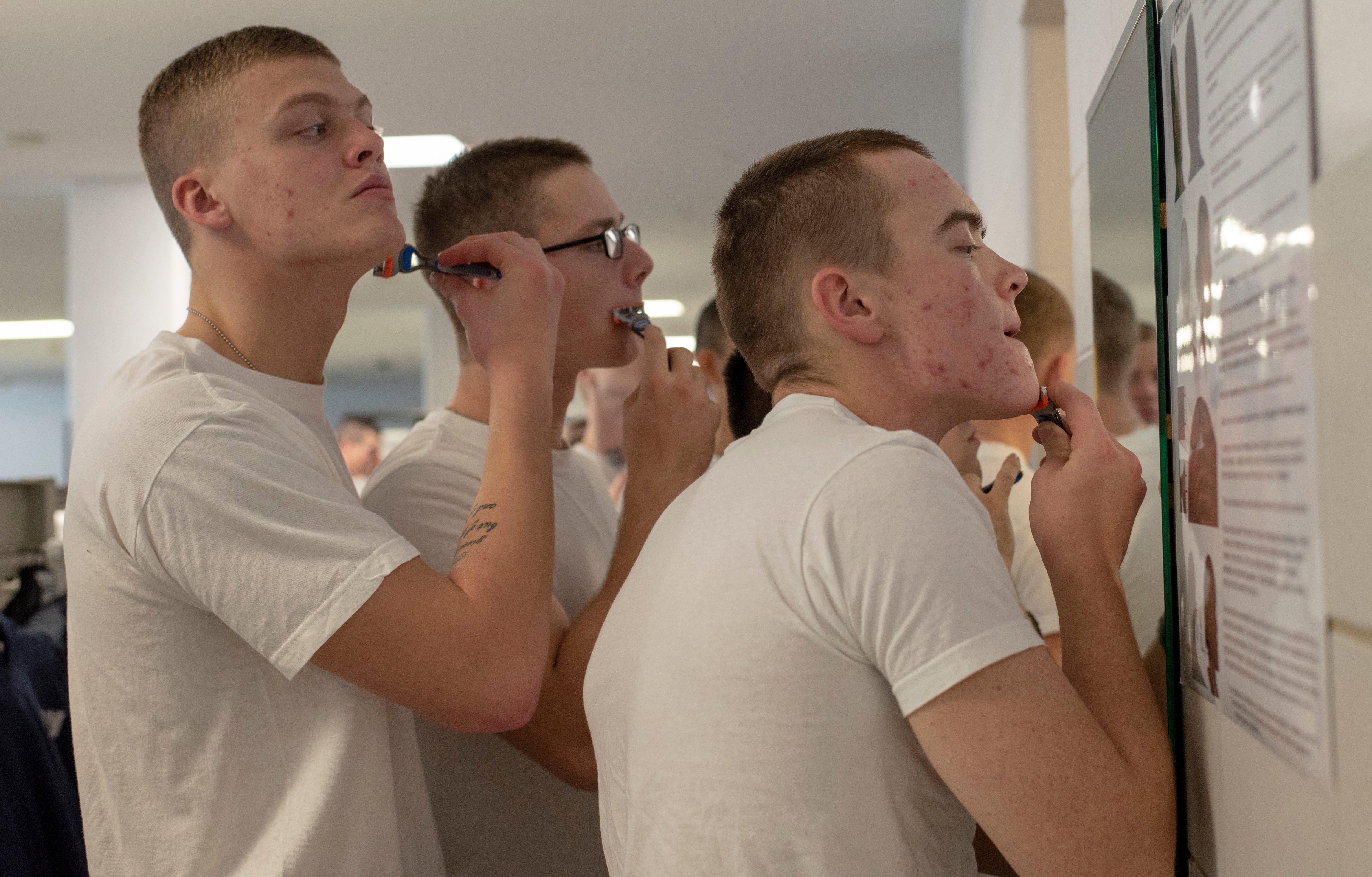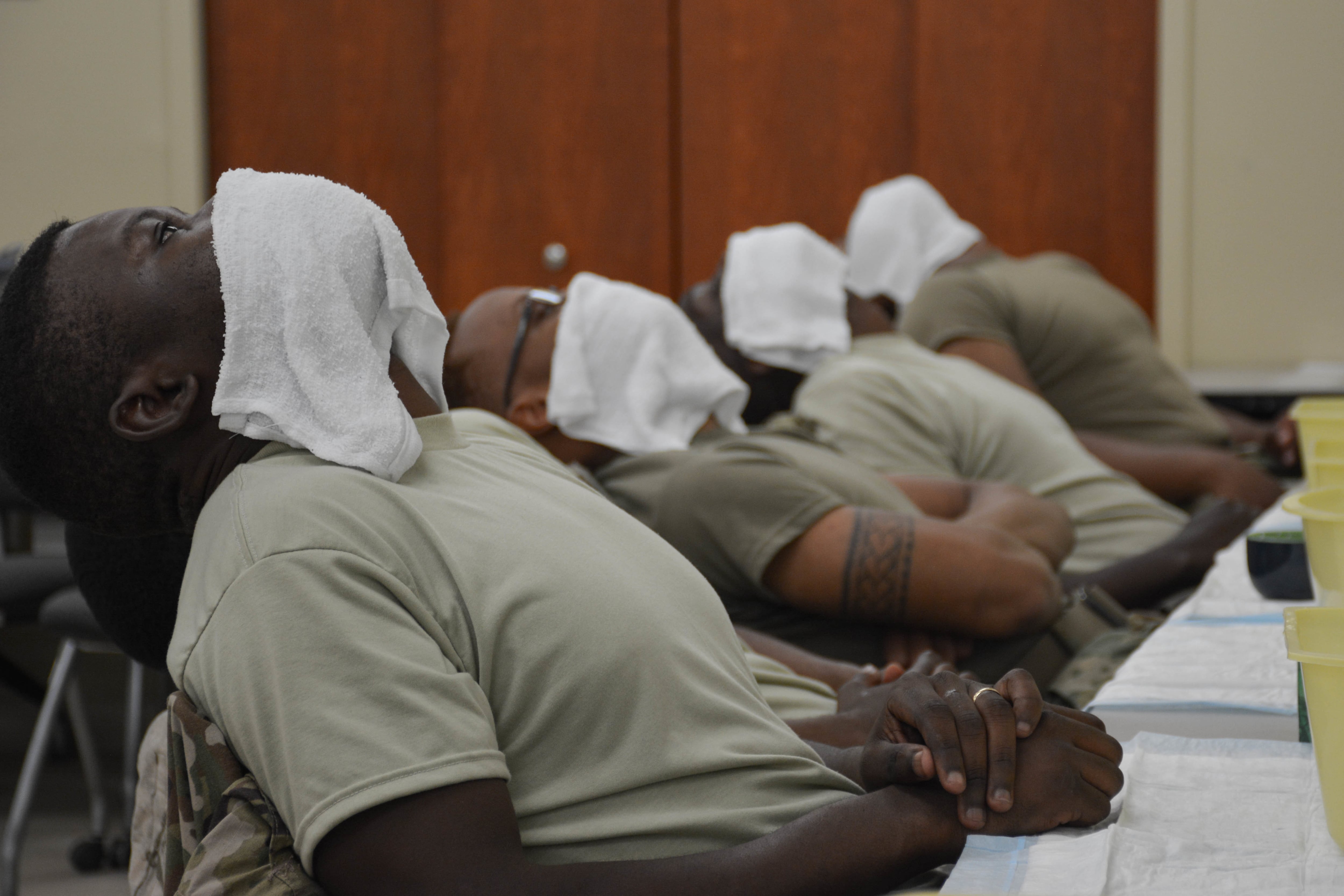A hairy problem faced by many sailors is about to become less so, and that could mean a bumpy road in the months ahead for some shipmates.
Effective next week, the Navy will scrap the permanent waivers that allowed some sailors who suffer from Pseudofolliculitis Barbae — a common condition caused by shaving that’s often called “razor bumps” — to grow out their scruff through their career.
Sailors with permanent no-shave chits have six months to receive a medical reevaluation, including a new treatment regimen, according to the updated Bureau of Naval Personnel instruction.
The new upcoming directive is slated to replace one released in 2004.
Officials said the upcoming instruction is tied to a pair of Naval Safety Center reviews conducted in 2016 and 2018 about respiratory protection regulations promulgated by the Navy and other federal agencies.
They found that beard growth might obstruct the seal of a face mask.
“Impact is an improvement in readiness of the force and improvement in safety of the sailor," said Rear Adm. Jeff Jablon, director of the military personnel, plans and policy division within the Office of the Chief of Naval Operations. "So we are ensuring that all our sailors will remain safe in the operational, maintenance and training environment that they’re under.”
Sailors will be allowed temporary no-shave chits for up to 60 days while they undergo treatment, Cmdr. Thomas K. Barlow— a dermatologist at Naval Medical Center San Diego — said in an interview.
During that time, sailors will be allowed to grow their beards to 1/4 inch — the length allowed under the previous instruction — as part of a treatment that can include applying medical creams to the affected area.

Razor bumps occur frequently among men who have curly hair that grows back into the skin. They can affect as many as 60 percent of African-American men and lead to scarring, according to the American Osteopathic College of Dermatology.
About 6,000 sailors are seen annually for the condition, Barlow estimated.
He doesn’t expect sailors to require more than three temporary chits before settling on a treatment, though the most extreme cases might require laser treatment.
Barlow said that laser treatments might thin beards permanently over time but insisted the Navy’s intent is to move sailors into a “therapeutic window” where they can comfortably shave, adding, “we don’t intend to make anybody’s chin bald.”
“We’re doing everything we can to make these treatment options available with the intent of supporting our sailors so that everybody will be able to shave, will be able to safely wear mask protection and will be able to do so comfortably,” Barlow said.
Commanding officers will retain the power to order someone with a temporary chit to shave if a beard places his safety at risk, or to reassign him if necessary while he’s being treated, Jablon said.
Sailors who refuse to comply with the treatment for razor bumps can be administratively discharged.
But it remains unclear if any sailors previously faced discharge for failing to stick with a treatment to alleviate razor bumps and officials were unable to tell Navy Times how many sailors have been issued permanent no-shave chits.
RELATED

Beards have been a hairy issue for the Navy for decades.
On Nov. 10, 1970, Chief of Naval Operations Adm. Elmo “Bud” Zumwalt fired off his all-caps Z-Gram 57: "I WILL NOT COUNTENANCE THE RIGHTS OR PRIVILEGES OF ANY OFFICERS OR ENLISTED MEN BEING ABROGATED IN ANY WAY BECAUSE THEY CHOOSE TO GROW SIDEBURNS OR NEATLY TRIMMED BEARDS OR MOUSTACHES OR BECAUSE PREFERENCES IN NEAT CLOTHING STYLES ARE AT VARIANCE WITH THE TASTE OF THEIR SENIORS.”
Over the next 14 years, other CNOs began trimming back the side-burned Zumwalt’s Z-gram. In 1984, the sea service published uniform regulations that outlawed beards for “persons in high visibility positions of leadership” such as commanding officers, executive officers and command master chiefs.
On Jan. 1, 1985, Adm. James D. Watkins banned beards for all sailors, with exceptions only for health reasons when authorized by a commander following the advice of a medical officer.
That pleased the fifth Master Chief Petty Officer of the Navy, Billy C. Sanders, who held the service’s highest enlisted post from Oct. 1, 1982 - Oct. 4, 1985.
“Each time that I would come back from a trip, I would report to the CNO that there were a lot of senior people out there who thought beards should be terminated," Sanders later told the Naval History Center. "Adm. Watkins finally made that decision. He didn’t make it lightly. He studied it for some time, calling in all of his flags with warfare departments to get their opinion.
"When he made the decision, it caused some upheaval but it was short lived. It didn’t cause as much turmoil as we thought it would. We went into it gradually with just the high visibility positions. Then the decision was made to apply the policy throughout the Navy.”
More than three decades later, calls grew louder within the fleet for easing the beard ban. When the Navy authorized expanded hairstyles for women in uniform in 2018, their male counterparts took to social media with the hashtag #WeWantBeards.

Courtney Mabeus-Brown is the senior reporter at Air Force Times. She is an award-winning journalist who previously covered the military for Navy Times and The Virginian-Pilot in Norfolk, Va., where she first set foot on an aircraft carrier. Her work has also appeared in The New York Times, The Washington Post, Foreign Policy and more.




